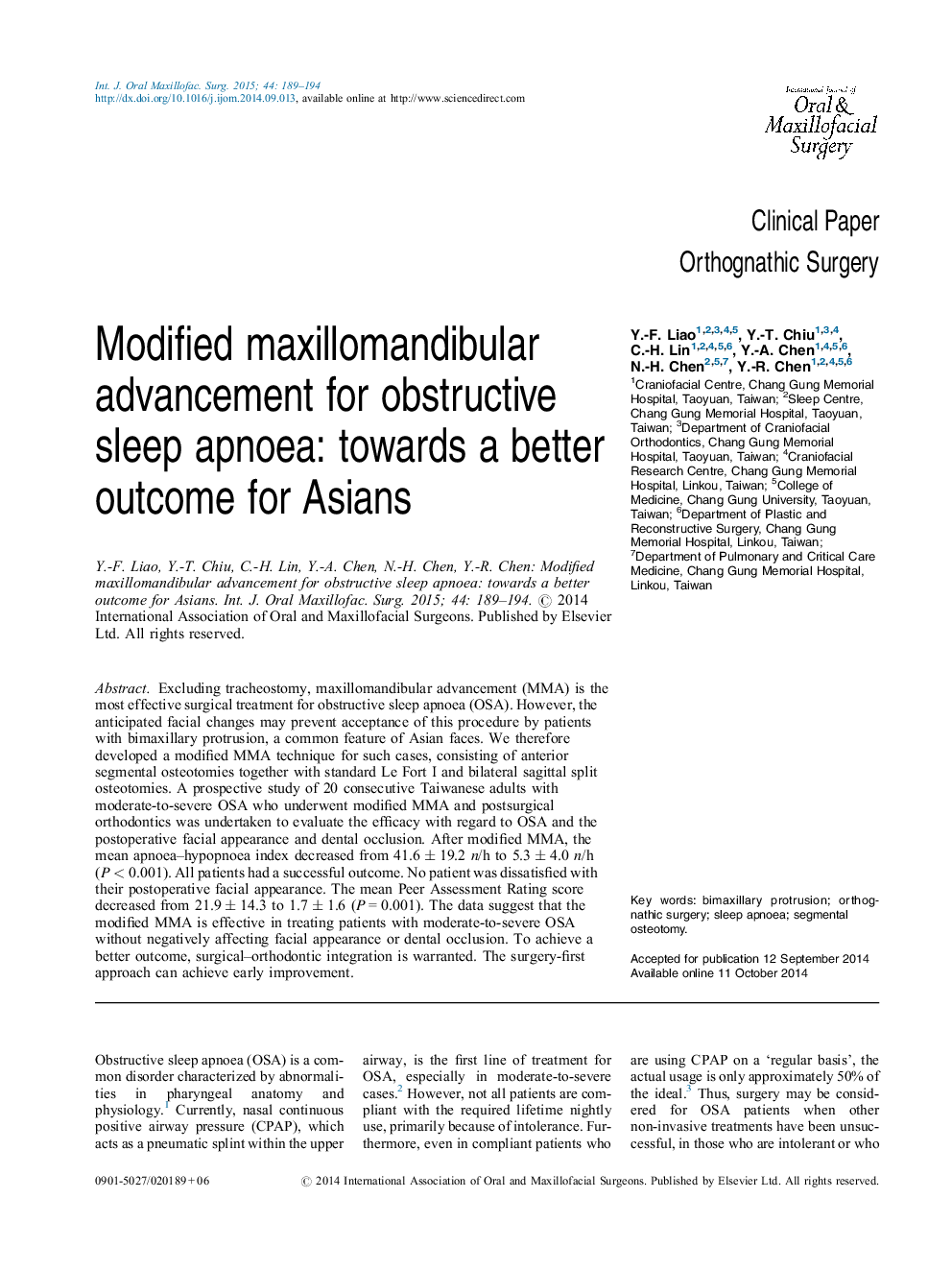| Article ID | Journal | Published Year | Pages | File Type |
|---|---|---|---|---|
| 3132316 | International Journal of Oral and Maxillofacial Surgery | 2015 | 6 Pages |
Excluding tracheostomy, maxillomandibular advancement (MMA) is the most effective surgical treatment for obstructive sleep apnoea (OSA). However, the anticipated facial changes may prevent acceptance of this procedure by patients with bimaxillary protrusion, a common feature of Asian faces. We therefore developed a modified MMA technique for such cases, consisting of anterior segmental osteotomies together with standard Le Fort I and bilateral sagittal split osteotomies. A prospective study of 20 consecutive Taiwanese adults with moderate-to-severe OSA who underwent modified MMA and postsurgical orthodontics was undertaken to evaluate the efficacy with regard to OSA and the postoperative facial appearance and dental occlusion. After modified MMA, the mean apnoea–hypopnoea index decreased from 41.6 ± 19.2 n/h to 5.3 ± 4.0 n/h (P < 0.001). All patients had a successful outcome. No patient was dissatisfied with their postoperative facial appearance. The mean Peer Assessment Rating score decreased from 21.9 ± 14.3 to 1.7 ± 1.6 (P = 0.001). The data suggest that the modified MMA is effective in treating patients with moderate-to-severe OSA without negatively affecting facial appearance or dental occlusion. To achieve a better outcome, surgical–orthodontic integration is warranted. The surgery-first approach can achieve early improvement.
